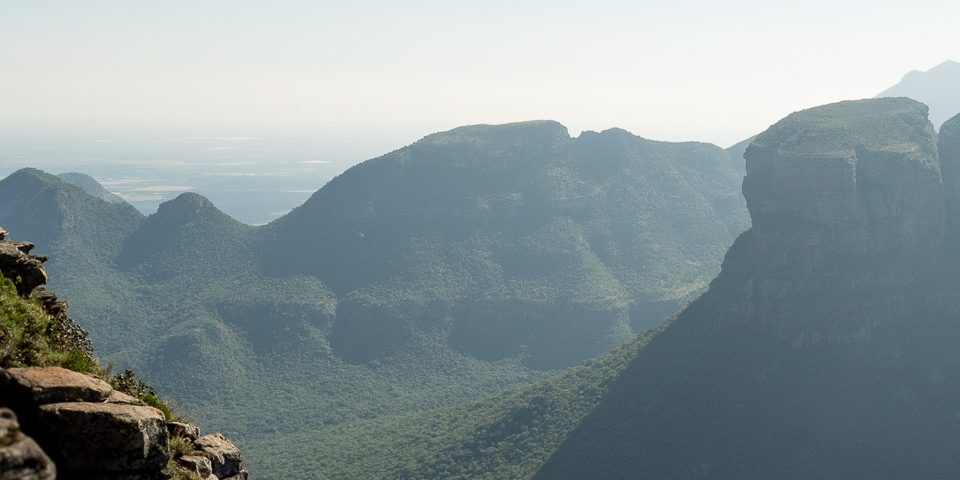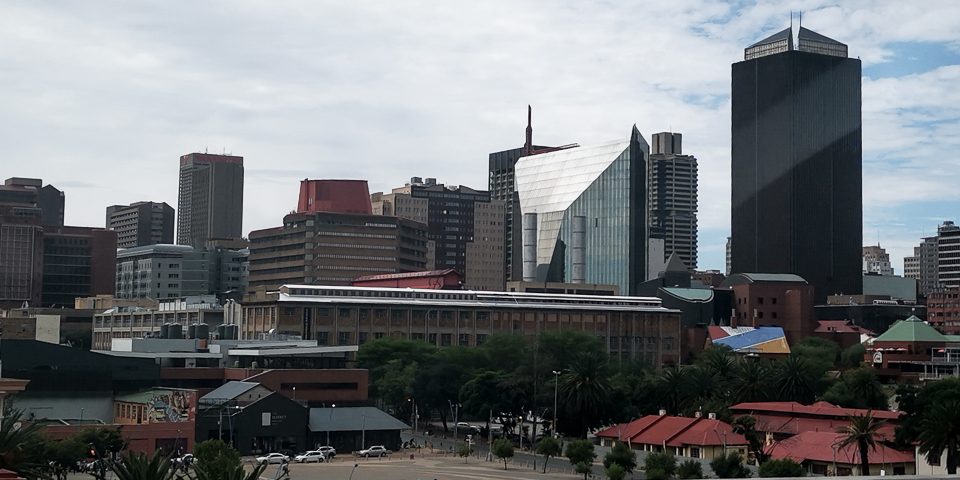Second on my bucket list for this trip was a visit of the Kruger Park. We left Hazyview early in the morning of the 21st towards Phabeni Gate because our host told us that there had been road blocks the last couple of days at the Kruger-Gate and because of a national holiday. So we expected a lot of locals spending a long weekend in the park, too. Luckily that was not really the case or we got up early enough.
Right after the entering we were greeted by a group of Impalas and Zebras. To of the most common inhabitants. The have about 160.000 Impalas in Kruger Park alone, but given the size of the Park with over 19.000 square kilometers I for myself din’t expect the impalas to be literally everywhere. On the other hand it’s by far the largest group followed by 40.000 buffalos and 30.000 zebras and 13.000 elephants.

Just a few kilometers before reaching the first rest camp we had to stop behind a few vehicles without knowing why. But then after a few minutes it became clear why everyone stopped. There was one of the rarest animals of the Kruger Park walking past us – one of the just 150 cheetahs. What a beautiful creature.

We continued our journey and used the main tar road to get to Olifants Rest Camp via Skukuza, Tshokwane and Satara which took us about five hours for the 85 kilometers and a stop at each of the camps – which you need given the fact that it is strictly prohibited to alight from your car outside of marked clearly marked areas.
When we had planned our trip, we tried to stay in Lower Sabie, located in the southern park of the park where it’s said that most of the big five could be seen there. But reaching Olifants we we glad we that Sabie was fully booked, forcing us north where we settled for Olifants. The camp lies on top of a mountain range high above the name giving Olifant river and hat a viewpoint where you can sit in the late afternoon at dinner watching hippos, crocodiles, waterbucks and occasionally groups of elephants drinking.
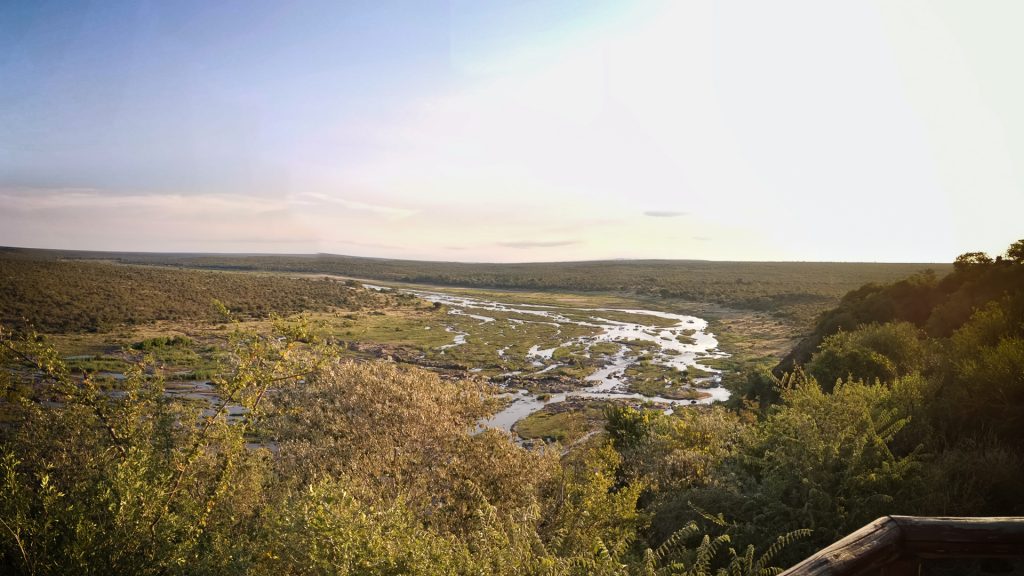
The rest camp itself is very basic – even after the recent refurbishing. But there is all you need. A well stocked shop and the chalets are three bed, with shower an open kitchenette outside and a grill. If you plan to visit it, try to book one of the chalets 2-12. Those have the amazing view from the porch. We made ourselves at home an then went back to the reception to see which guided tours we could do in the next two days since we didn’t want to do self driving safari alone.
We settled for the morning drive next day and a walk along the bank of the Olifant river in the afternoon for the next day.
The morning drive ought to start at half past four in the morning, so we had dinner while watching a family of elephants cross the river and headed east and quickly went to bed afterwards. At a quarter to four we learned that this would be the first day we had rain and started the tour in a light drizzle while completely dark. Armed with spotlight we searched the area for all the nocturnal or shy animals on the move.
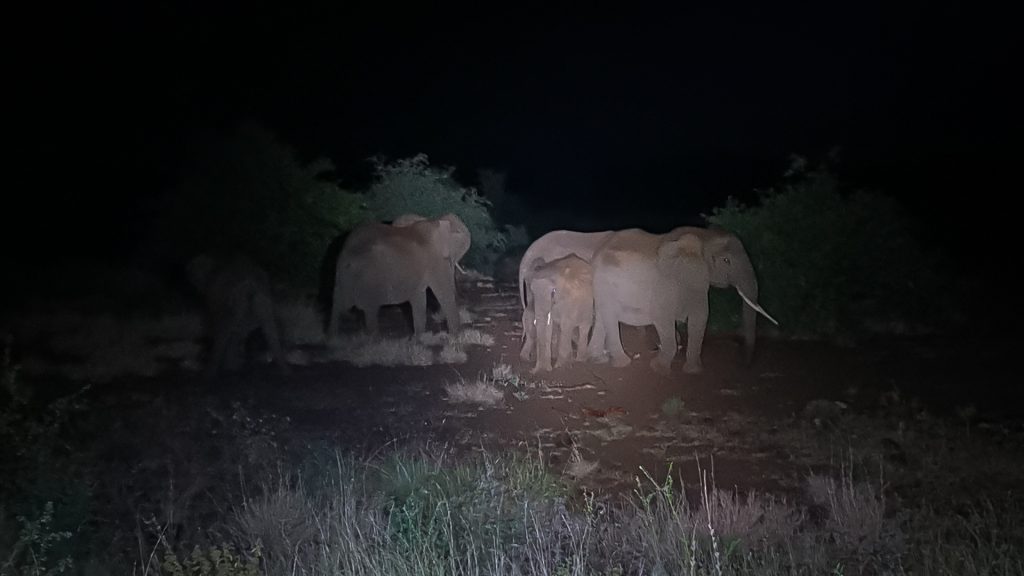
At first we did only see all the usual like waterbucks, wildebeest, elephants a few Hares and a Hippo exploring the Olifant Bridge but a the sun rose we spotted a Hyena on the road and the guide did a full stop. Shortly after that we heard screams and roars and saw a running giraffe in the bush, sadly with a lot of vegetation blocking our view. There was a fight going on and the Giraffe must have tried to protect something because after some turns she ran off seemingly unbothered.
Our guide said that there must have been a kill – most likely young giraffe.
In the next fifteen minutes nearly a dozen other Hyenas crossed the road an gathered between us and a patch of vegetation where some female lions were chased of by at least two male lions. This confirmed that there must have been a kill since the male lions feed first before the female lions are allowed to.
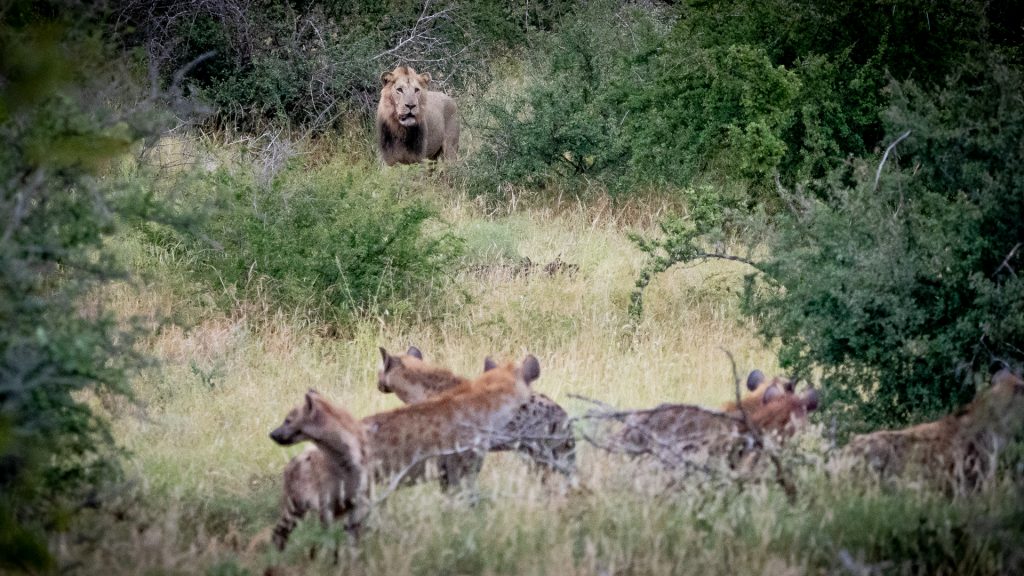
We arrived back at the camp in time for breakfast and then decided to take the S44/S93 dirt roads along the Olianfts north towards Letaba, where we ate lunch and headed back the main road to our camp.
The roads are mostly in pretty good condition, but that can be fooling after a bit of rain and when you have to cross through the occasional dry creek where you need to have a little bit more ground distance and four wheel drive to get through without damaging your car. Weather was cloudy at about 31° C . We didn’t see many animals on that route though besides the usual.
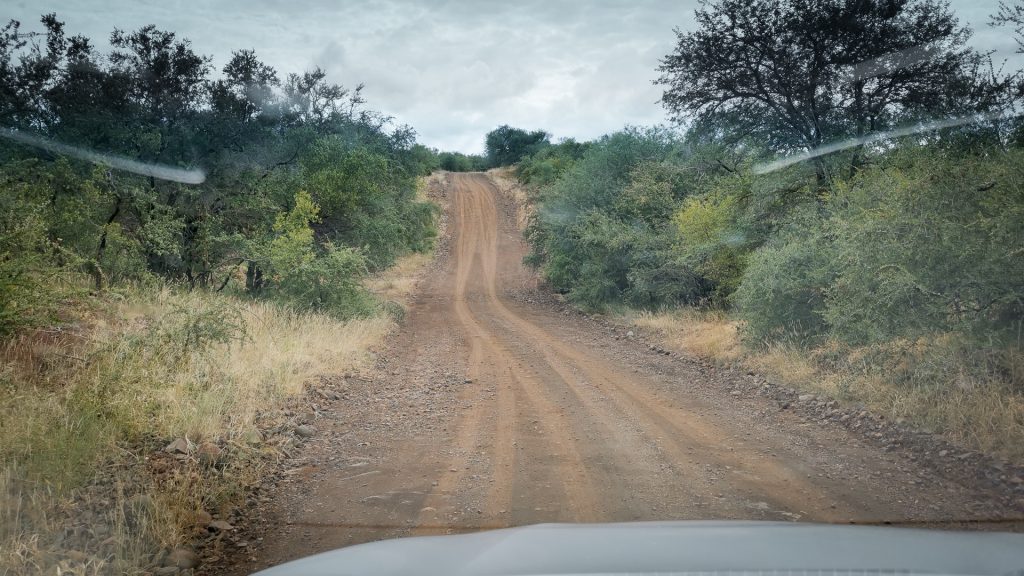
Back at out camp we went to the lookout again and then had dinner and a few drinks. For the next day we planned driving towards the Timbavati picnic site and then the dirtroad north along the riverbed.
The next day after Breakfast, we went south towards Satara, but left the main road and headed westwards on the S127 for the Timbavati Picnic Site. Its a nice little unfenced but guarded place at a the Timbavati river. The riverbed was completely dry and we did only see a few bushbucks.
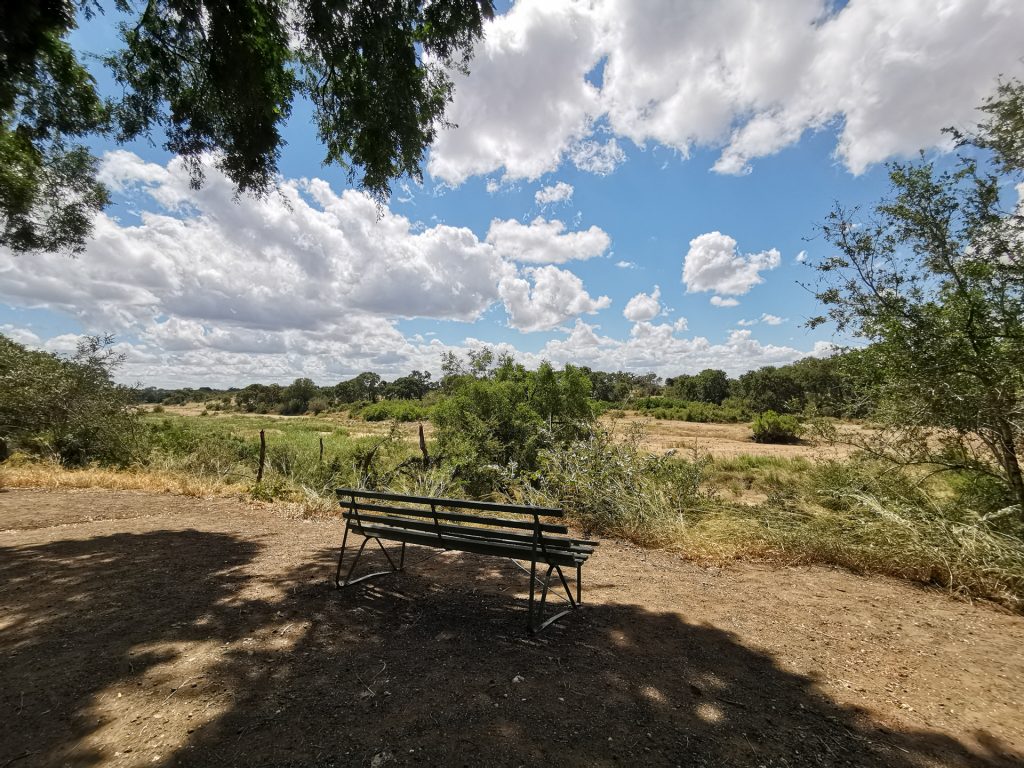
After a short break and a snack we drove north along the riverbed. The Road was pretty deserted and we did not see any other vehicle. The road was nice with lot of small loops towards the river for lookouts and even a small bird watching hut. We saw a lot of zebras, impalas and waterbucks, a family of warthogs, the occasional elephant. We were at one of the lookouts overlooking the riverbed without seen anything for about ten minutes and just I had started the car drove on again as Inger stopped me because she thought she saw something right beside the car. I reversed a little bit and there – overlooking the riverbed just as we did a moment before – lay a leopard. Only three meters from our car in the grass in the shade under a bush. Very well hidden so I had a hard time taking a picture because auto-focus was impossible.

We watched the leopard for a good time but it was totally relaxed and would not reward us with standing up. Happy about that sighting we continued our drive an headed back to the Olifants Camp because we booked a guided bush walk along the banks of the Olifants river later that afterternoon.

The walk was very informative. We were four plus two guides an first went a little south before leaving the car behind walking in line towards the river in the paths created by hippos and elephants. As expected, we did not see many animals because most of them leave as soon as they are aware of humans. But we learned a lot about the vegetation, little critters, basil scented lions and tracks of the different animals and signs of the indigenous inhabitants of the area. We took a route south along the river, where we stopped and watched a group of hippos and one of the biggest birds of the Kruger Park – goliath heron which stands about 150 cm tall and has a wingspan of nearly two and a half meters.
After roughly two hours time we headed back to the car an drove back to the camp where we once again had dinner. It was then when I saw the first crocodile laying on a small sandbank below the camp.

On Sunday the 24th we left Olifants and headed south all the way down to Crocodile Bridge where we left the Kruger Park heading west to Marloth Park where we checked in at Needles Lodge.
It’s a nice little lodge in the western part of Marloth Park and is was nice having a little more luxury after the very basic Olifants camp. We spend the late afternoon in the garden where kudus and warthogs roam free and in the evening the day ended with a very good african style dinner at the lodge, together with all the other guests and staff after which I sat on the porch until late in the evening and had a few drinks with the others while watching the big fruitbats snatch the banana pieced we put out on the porch.
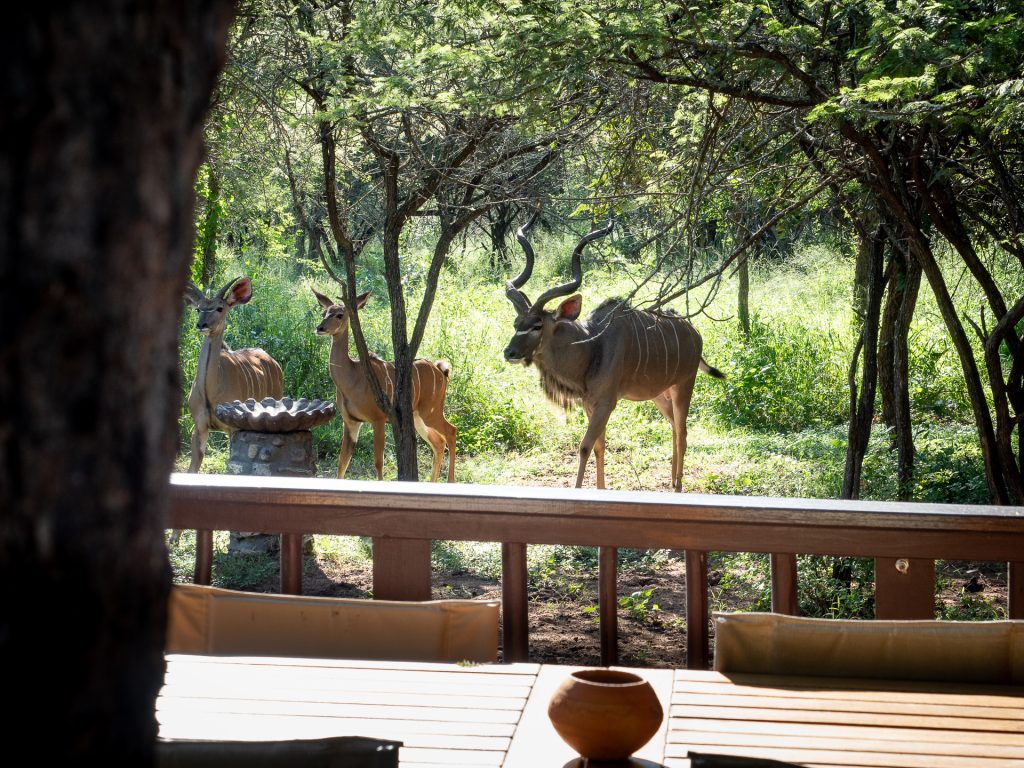
This was a great way to end the four days we spent in the Kruger Park and which felt a lot shorter – I was a little sad that I did not see a rhino though.
